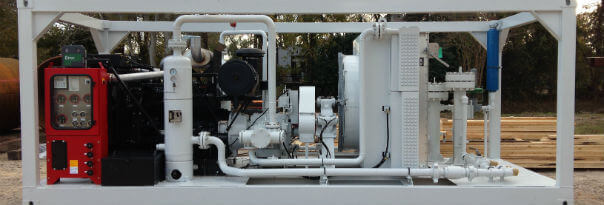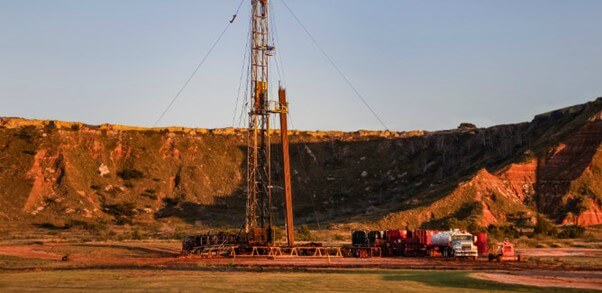
High-Pressure Nitrogen Generators & Using Nitrogen Booster Pumps
Due to its favorable physical and chemical properties, gaseous nitrogen is currently used in various industrial blanketing, purging, and flushing operations. As a result, the demand for high-pressure nitrogen generators has surged.
This article will consider the methods by which plant operators can optimize their nitrogen generation and usage for high-pressure requirements.
High-pressure Nitrogen Pump for PSI Requirements
Simply generating nitrogen is not enough as most industrial processes that use the gas require it to be delivered at a specific pressure. High-pressure nitrogen booster pumps allow operators to raise the pressure of newly synthesized nitrogen gas to the necessary level before channeling it to their processes.
Depending on the equipment design, maximum psi ranges generated by the booster pumps vary. As an added advantage, most high-pressure boosters do not require electric power and can be operated in a variety of environments.
What Is a High-Pressure Booster Compressor?
A high-pressure booster system is a device that improves the pressure of pre-compressed air or other gases. These pressure optimization devices can convert low-pressure airflow to a significantly higher pressure. Typical air pressure booster pumps can enhance the pressure of air circulated through them by ten times the original value.
Supplement with Skid-mounted Booster Pumps
Skid mounted air pressure boosters aid nitrogen generators supply well-pressurized nitrogen gas. A key benefit of integrating a skid-mounted high-pressure booster is the ease of transportation. Skid-mounted units can be safely and securely transported to various locations where nitrogen gas generation is being conducted.
Air Pressure Booster Applications
Air pressure boosters are utilized in several industrial applications including the following.
PET Bottle Manufacturing
Automated polyethylene terephthalate (PET) manufacturing requires a continuous supply of high-pressure gas that standard compression systems cannot provide. Booster air compressors help deliver high-pressure air to blow molding machines that produce PET bottles. The blow molding technique utilizes compressed air to force the molten thermoplastic into a mold.
Industrial Pressure Testing
Pressure testing of pipelines, tubing, vessels, piping systems and more helps to determine their integrity, reliability, and leak tightness before and after being commissioned at a site. It is usually carried out during maintenance operations to ensure that essential equipment is functional and in good condition.
The compressed air or nitrogen leak test procedure (also called pneumatic testing) involves passing compressed air through the container to a required pressure range and subsequently ‘bleeding off’ the gas via pressure relief valves located on the system under test. A pneumatic booster pump or pneumatic air pressure booster is suitable for this purpose.
Oil and Gas Production & Transportation

Pressurized fluids such as carbon dioxide (CO2) and nitrogen gas are useful for special processes involved in hydrocarbon production. During the secondary recovery and enhanced oil recovery (EOR) phases of crude production, pressurized gas may be used to increase the pressure within the formation to stimulate the well and ramp up declining production.
Some examples are gas lift and nitrogen injection techniques. Additionally, high-pressure air or nitrogen can be used to purge hydrocarbon pipelines of impurities and toxic substances. This type of nitrogen purging for pipeline drying can help during pipeline decommissioning or commissioning.
Booster systems can amplify gas pressures of onsite nitrogen generators or air compressors to enable these processes. For short-term applications, check out NiGen’s selection of nitrogen generator rentals and industrial air compressor rentals.
Booster vs. Compressor: Which Do You Need?
Both air booster systems and air compressors deliver pressurized air. However, compressors that have a booster system attached can achieve up to ten times greater air pressures than standard systems. If your process requires a high range of pressures, then you will need an air pressure multiplier.
On-site Nitrogen Generation
Generating the appropriate quantities of nitrogen required at each stage of a production cycle is the most cost-effective approach to follow. On-site nitrogen generators will rapidly synthesize nitrogen on demand to meet all process needs at a moment’s notice. The most effective on-site nitrogen generation techniques are described in subsequent sections of this article.
On-site PSA Nitrogen Generators
These nitrogen generators utilize the differential separation of gaseous mixtures on an adsorbent medium to synthesize high purity nitrogen gas. These generators operate a two stage process of adsorption and desorption to separate nitrogen from the other gases present in the air. The entire pressure swing adsorption process occurs very rapidly with a cycle of nitrogen synthesis occurring in approximately 60 seconds.
On-site Membrane Nitrogen Generators
Membrane nitrogen generators employ specialized semi-permeable membranes to separate air into its constituent gases. Hollow fiber membrane filters use the varying speeds of the different gas components to achieve separation.
The membrane typically has hollow fibers on its surface which provide a larger surface area for faster selective absorption of desired gases. The nitrogen gas obtained from a membrane generator is also high purity and can be channeled directly to an associated industrial process.
Disadvantages of Nitrogen Cylinder Deliveries
An alternative to the use of on-site generators is the use of gas supplied in cylinders. While pressurized nitrogen cylinders will fulfill a purpose similar to that of an on-site nitrogen generator, there are some significant drawbacks.
- Gas wastage
- Consumption of industrial floor space
- Increased safety hazard
- Long term costs
- Downtime from delayed delivery
Gas Wastage
With the use of gas cylinders, wasting some of the contained gas is inevitable during transportation, storage, or use. The risk of leaks from faulty cylinders will reduce the useful volume of gas supplied. Further, your N2 pressure requirements must be lower than those of the pressurized nitrogen cylinders to meet your process needs.
Consumption of Industrial Floor Space
Storing nitrogen gas cylinders means the industrial floor space that could have been used to house other critical manufacturing components are used for storage and transportation. This will inconvenience smaller operations with limited floor space.
Increased Safety Hazards
Cylinder-sourced nitrogen gas poses a significantly higher industrial hazard compared to onsite generation. This is because stored units can leak with nitrogen gas posing a health risk to personnel especially within confined spaces. Puncturing a pressurized cylinder could also lead to injury.
Higher Operating Costs in the Long Term
Although an onsite generator might initially cost more to install, the long term running costs are significantly lower when compared to nitrogen delivered in cylinders. The costs of continuously procuring nitrogen gas cylinders will far outstrip the expenditure on maintaining an onsite nitrogen generator.
Downtime from Delayed Gas Delivery
Plant operators dependent on nitrogen supplied in cylinders might experience costly production downtime when there are delays in the delivery of pre-ordered gas cylinders. By comparison, the use of an onsite nitrogen generator eliminates this problem as adequate quantities of the gas can be synthesized as needed.
NiGen’s Nitrogen Gas Solutions Cover Most Applications
NiGen International is an industry leader in the design and fabrication of onsite nitrogen generation systems, pipeline services, and engineering services for the oil and gas industry. We provide containerized solutions to suit the most challenging operations.
For more information about our products and services or to request a quote, please contact us via our website today!
